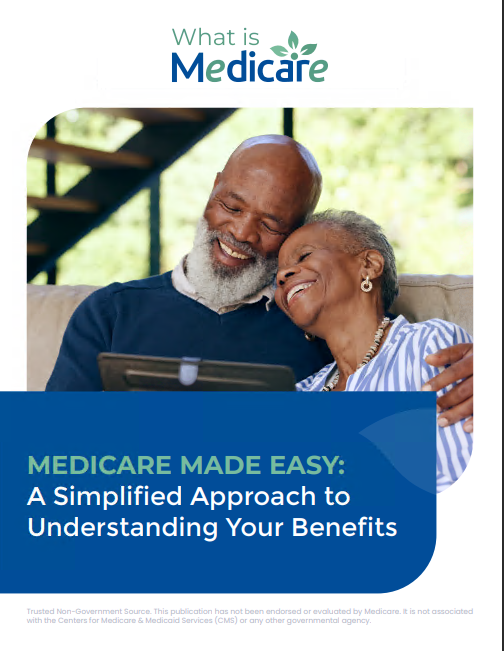Key Takeaways
- Understanding Medicare enrollment is crucial to avoiding common pitfalls and ensuring timely access to health coverage.
- A step-by-step approach can help reduce the stress of Medicare enrollment and keep you organized throughout the process.
Medicare Enrollment Stressing You Out? Here’s How to Breeze Through the Process
Navigating Medicare enrollment can feel like a daunting task, especially with the different parts, deadlines, and options involved. It’s natural to feel overwhelmed, but with the right preparation and knowledge, you can streamline the process and avoid unnecessary stress. This guide will walk you through the essential steps to make your Medicare enrollment as smooth as possible. Whether you’re approaching eligibility or considering switching plans, following a strategic approach will help you get through it with confidence.
1. Understanding the Basics of Medicare Enrollment
Medicare is a federal health insurance program primarily for people aged 65 or older, though younger individuals with certain disabilities or conditions may also qualify. It’s important to know that Medicare is divided into four main parts:
- Part A covers hospital stays, skilled nursing facilities, hospice care, and some home healthcare.
- Part B provides medical coverage for doctor visits, outpatient care, preventive services, and durable medical equipment.
- Part C (Medicare Advantage) is an alternative to Original Medicare (Parts A and B) and is offered by private insurance companies. It typically includes additional benefits, like dental or vision coverage.
- Part D is for prescription drug coverage, and like Part C, it is also provided by private insurers.
The enrollment process can be less stressful when you understand which parts you need and the specific timeframes to enroll.
2. Know Your Enrollment Periods: Timing is Everything
Missing your Medicare enrollment deadlines can lead to penalties or gaps in coverage. To avoid this, it’s crucial to know the key periods when you’re allowed to enroll.
-
Initial Enrollment Period (IEP): This seven-month period begins three months before you turn 65, includes your birthday month, and ends three months afterward. This is the best time to sign up for Medicare Parts A and B if you are not automatically enrolled.
-
General Enrollment Period (GEP): If you miss your IEP, you can enroll during the GEP, which runs from January 1 to March 31 each year. Coverage begins on July 1, but late enrollment penalties may apply.
-
Special Enrollment Period (SEP): You may qualify for an SEP if you delay enrolling in Medicare due to having coverage through an employer. This period typically lasts eight months after employment or employer coverage ends.
-
Annual Enrollment Period (AEP): From October 15 to December 7, you can make changes to your Medicare Advantage or Part D plans.
Keeping track of these periods can prevent late penalties and ensure you get the coverage you need without delay.
3. Prepare Your Documentation Early
One of the biggest sources of stress during Medicare enrollment is the paperwork. Ensuring you have all the necessary documents ready in advance can save time and hassle. Here’s a list of key documents you may need:
- Proof of age (birth certificate or passport)
- Social Security number or Medicare number
- Employment history if you’re applying for delayed enrollment due to employer coverage
- Information about your current healthcare coverage
Having these ready will streamline the application process, especially if you’re applying online or over the phone.
4. Decide Between Original Medicare and Medicare Advantage
One of the most important decisions you’ll make is whether to choose Original Medicare (Parts A and B) or a Medicare Advantage plan (Part C). Both options have pros and cons depending on your healthcare needs and budget.
-
Original Medicare: This option gives you access to a wide range of doctors and hospitals across the U.S. It doesn’t include prescription drug coverage (you’d need to enroll in Part D separately) or some extras like dental and vision.
-
Medicare Advantage: These plans often bundle Parts A, B, and D together and may offer additional benefits like vision, hearing, and dental. However, they typically have network restrictions, meaning you may need to see certain doctors or use specific hospitals.
It’s important to weigh the coverage, costs, and convenience of each option based on your personal health situation and preferences.
5. Evaluate Your Prescription Drug Needs (Part D)
If you take prescription medications, enrolling in a Medicare Part D plan is essential. Not having drug coverage when you’re eligible can lead to higher costs later on due to late enrollment penalties.
When choosing a Part D plan, consider the following:
- What medications are covered under the plan’s formulary?
- What are the co-pays and out-of-pocket costs for your medications?
- Does the plan offer coverage in your area?
By reviewing the details of each plan’s drug coverage, you can find the one that best fits your needs and avoid unexpected costs later on.
6. Understand the Costs Associated with Medicare
While Medicare is a federal program, it’s not free. You’ll need to budget for various costs, which can include:
- Part A premiums: Most people do not pay a premium for Part A, as long as they have worked for at least 10 years (40 quarters) and paid Medicare taxes. If you haven’t, there may be a premium for Part A coverage.
- Part B premiums: These are typically deducted from your Social Security benefits and can vary based on your income.
- Part D premiums: If you choose a Medicare prescription drug plan, this will also come with a monthly premium.
Understanding these costs in advance will help you plan your budget and avoid any surprises.
7. Get Help When You Need It
Medicare is complicated, and it’s okay to ask for help. Licensed insurance agents can assist you with your options, answer your questions, and guide you through the enrollment process. You can also contact Medicare directly for assistance or visit Medicare.gov for comprehensive resources.
Another helpful resource is your State Health Insurance Assistance Program (SHIP), which offers free, unbiased counseling for Medicare beneficiaries. SHIP counselors can help you review your options and make informed decisions.
8. Stay Organized and Use a Checklist
One of the best ways to reduce stress is to stay organized. Create a checklist with important deadlines, documents you’ll need, and steps to complete. For example:
- Mark the date when your Initial Enrollment Period begins.
- Gather required documents well ahead of time.
- Decide if you need Original Medicare, a Medicare Advantage plan, or both.
- Review your prescription drug coverage needs.
- Set reminders for enrollment deadlines and any follow-up tasks.
By keeping track of these tasks, you’ll feel more in control and confident throughout the enrollment process.
9. Stay Updated on Medicare Changes for 2024
Each year, Medicare makes adjustments to premiums, deductibles, and coverage options. In 2024, there are several updates that could affect your choices. While these changes may seem minor, they can significantly impact your coverage or costs. Make sure to review any new rules or regulations before enrolling to ensure you’re getting the best possible benefits for your situation.
10. Final Tips for Stress-Free Medicare Enrollment
- Start early: Don’t wait until the last minute to begin your research and paperwork.
- Ask questions: If something is unclear, reach out for help from licensed agents or Medicare.
- Stay informed: Keep up with any changes to Medicare coverage or costs.
By taking these steps, you can avoid common mistakes and confidently navigate your Medicare enrollment without unnecessary stress.
A Few Last Thoughts
Medicare enrollment doesn’t have to be a source of anxiety. With a little preparation and the right resources, you can tackle the process with ease. By understanding the basics, keeping track of deadlines, and knowing where to go for help, you’ll breeze through your enrollment and enjoy peace of mind knowing you have the healthcare coverage you need.










